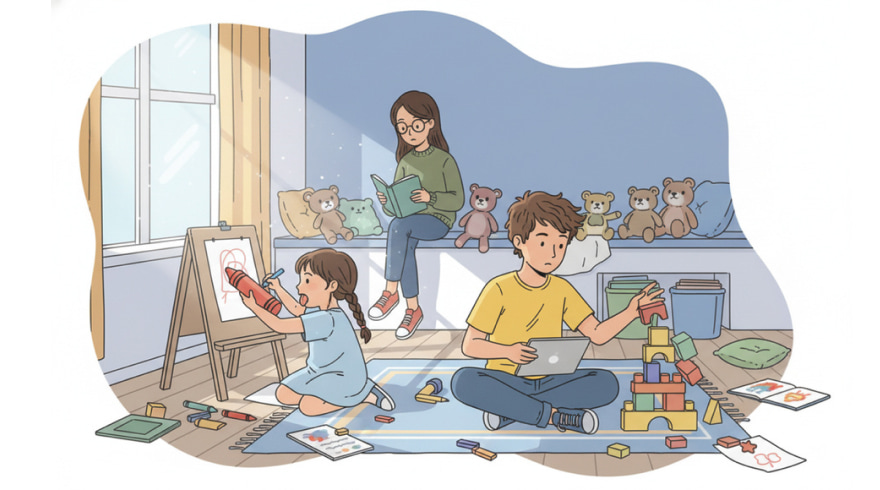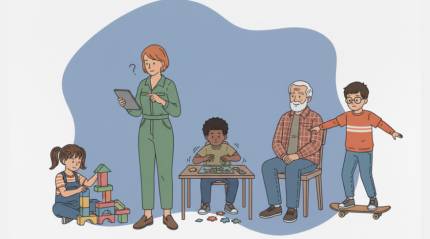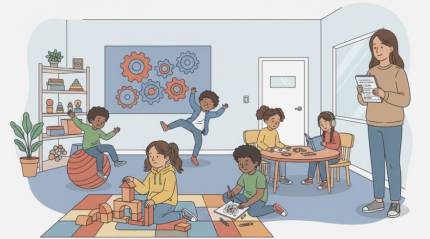Comprehensive Guide to ADHD Screening in Children: Clear Steps and Real Benefits
- 22 October 2025

Understanding ADHD Screening and Why Early Insight Matters
Parents often notice subtle patterns long before a formal diagnosis is considered, such as a child losing track of multi-step instructions, struggling to switch tasks, or fidgeting through seated activities. These observations are valuable signals, not conclusions, and they can spark constructive conversations with educators and pediatric clinicians. Early screening does not label a child; instead, it outlines strengths and challenges so families can align routines, expectations, and supports. When insight arrives sooner, the stress in daily life often drops, and confidence grows on all sides.
Caregivers sometimes want a structured starting point before scheduling an evaluation, and brief screeners can organize thoughts into clear themes. Many caregivers explore options, and tools such as the ADHD test for kids can surface attention patterns early without replacing professional judgment. By translating diffuse behavior into specific indicators, parents get language they can share with teachers and counselors. This shared vocabulary shortens the path to meaningful accommodations and reduces trial-and-error strategies at home.
Teachers also benefit when families bring concise, behavior-focused notes that highlight where routines succeed and where they stall. In some cases, clinics or school teams suggest a short pre-visit screener, and a brief kids ADHD test sometimes helps structure the conversation across home and classroom contexts. The goal is clarity, not labels, and the outcome is a more tailored plan for instruction, transitions, and self-regulation. With early alignment, children experience fewer negative feedback loops and more chances to practice skills that stick.
How Professionals Evaluate Attention, Impulsivity, and Executive Skills
A comprehensive evaluation for attentional differences examines multiple settings, multiple voices, and multiple skill domains. Pediatricians, psychologists, and educational specialists synthesize developmental history with standardized measures and classroom input to rule in patterns and rule out lookalike conditions. Clinics often outline scope and sequence before testing, and families can ask how reports will connect to practical strategies at home and school. When a coordinated plan exists, follow-through becomes far more likely.
Typical clinic workflows include behavioral scales, cognitive tasks, and observational notes, and families should expect an iterative process rather than a single snapshot. Many providers frame the process as layered data collection, and that is why ADHD testing for kids frequently blends rating forms with performance-based tasks to capture both perception and behavior. Clear communication about time frames, deliverables, and feedback sessions can manage expectations and reduce anxiety for everyone involved.
| Component | Who Uses It | What It Shows | Typical Time |
| Behavior Rating Scales | Parents and Teachers | Frequency and context of behaviors across settings | 10–20 minutes per form |
| Performance Tasks | Clinicians | Sustained attention, inhibition, and working memory | 20–45 minutes |
| Clinical Interview | Parents and Child | History, strengths, challenges, and functional impact | 45–90 minutes |
Interpretation hinges on context, and rating forms are particularly powerful when completed by multiple observers. Many clinics combine scales with targeted questions, and a structured ADHD questionnaire kids approach helps separate developmentally typical behaviors from persistent patterns. Families can prepare by listing concrete examples, noting times of day, triggers, and successful supports. These details enrich the assessment and lead to recommendations that are practical rather than generic.
- Bring schoolwork samples that illustrate focus wins and focus dips.
- Note sleep routines, nutrition patterns, and screen habits that affect regulation.
- Capture moments of success to highlight strategies worth amplifying.
What to Expect After the Assessment
Feedback sessions typically translate test results into day-to-day strategies for home and school. Plans may include classroom accommodations, coaching, behavioral supports, or referrals for additional services. Families should leave with clear next steps and checkpoints to review progress. When actions are specific and time-bound, momentum builds quickly and confidence rises.
Interpreting Results and Turning Insights Into Benefits for Your Child
Assessment results are most useful when they map directly to routines, transitions, and learning goals. A strong report will spotlight assets alongside challenges so adults can engineer environments that amplify focus and reduce friction. Progress rarely moves in a straight line, so families benefit from regular check-ins and small-course corrections. Over time, these tweaks create a scaffolding that supports independence and motivation.
Some families like to practice self-reflection between appointments using simple screeners that emphasize patterns rather than labels. In that context, a playful format like ADHD quiz kids can encourage older children to notice when focus peaks and dips throughout the day. The insights become actionable when they lead to changes in timing, task design, or break structure. Small insights, applied consistently, deliver outsized gains.
Digital tools can also help parents consistently document observations across weeks. For trend spotting rather than diagnosis, thoughtfully designed online ADHD tests for kids may reveal when routines, sleep, or workload changes make attention easier or harder. This kind of lightweight tracking supports collaborative problem-solving with teachers and clinicians. When everyone sees the same data, the whole team can adapt quickly.
- Benefit: Faster identification of situations that hinder or help attention.
- Benefit: Tailored routines that reduce conflict and boost follow-through.
- Benefit: Clearer communication with schools using concrete, shared language.
- Benefit: Measurable milestones that make progress visible and motivating.
Using Digital Screeners Responsibly: Accuracy, Privacy, and Next Steps
Online screeners can be convenient starting points when families want structure before meeting a professional. Many caregivers find digital formats engaging for children, and a well-presented ADHD online quiz kids option can make participation feel less intimidating. Convenience should never replace comprehensive evaluation, but it can prepare families to ask sharper questions. The best outcomes come from pairing accessible tools with expert guidance.
Privacy is a top priority, and parents should review data policies before entering personal information. Some platforms summarize results in plain language, and that clarity makes a carefully designed ADHD test online for kids a helpful bridge to a clinician visit. Results should be saved securely and shared only with trusted professionals who can interpret them in context. When used thoughtfully, digital screeners become catalysts rather than conclusions.
Reliability varies across websites, so families should look for tools backed by research, transparent scoring, and clear disclaimers. It helps to cross-check insights with teachers and to document examples that align with the screener’s themes. Collaboration keeps decisions grounded in real-world observations. With a measured approach, families get the convenience of technology while maintaining clinical rigor.
- Check whether the tool cites validated scales or peer-reviewed sources.
- Avoid platforms that collect unnecessary data or lack clear privacy terms.
- Share summaries with your pediatrician to connect results to action.
Faq: Common Questions About ADHD Screening for Children
How do I know if a screener is appropriate for my child’s age?
Age-appropriate screeners typically specify the developmental range they were designed to assess and include examples relevant to school and play. Parents can scan sample items to see whether the language and scenarios match their child’s daily life. Many families appreciate quick starting points, and a concise tool like ADHD test online free kids can help organize observations before a formal visit. When in doubt, ask your clinician to recommend an option aligned with your child’s age and circumstances.
Will a screener provide a diagnosis or just guidance?
Screeners provide directional insights and should never be treated as a standalone diagnosis. Their purpose is to highlight patterns worth discussing with qualified professionals who can evaluate context, history, and alternative explanations. A careful path from observation to evaluation to support ensures decisions are both compassionate and evidence-based. Collaboration keeps results meaningful and actionable for families and schools.
What should I do with results after completing an online tool?
Start by summarizing key observations and noting when behaviors occur, how intense they are, and what helps. Many caregivers then share highlights with teachers and pediatricians to connect findings to next steps. For families seeking a bridge to care, a thoughtfully designed ADHD test for kids online can simplify communication by organizing patterns into clear categories. The next move is to request a professional evaluation if concerns persist across settings.
How can teachers support the process if concerns arise in class?
Teachers can document specific examples tied to tasks, times, and triggers, then coordinate with families on consistent strategies. Short, frequent check-ins often work better than large, infrequent changes, and visual schedules reduce cognitive load. Positive reinforcement tied to concrete goals builds momentum quickly. Sharing what already works is just as important as sharing challenges.
Are free tools useful, or should I only trust paid options?
Cost does not determine quality; transparency and validation matter far more than price. Parents should look for clear scoring, published references, and privacy policies that respect family data. Some free options are thoughtfully built, and a reputable free online ADHD test for kids can be a helpful first step when paired with professional follow-up. The best practice is to treat results as conversation starters, not final answers.



